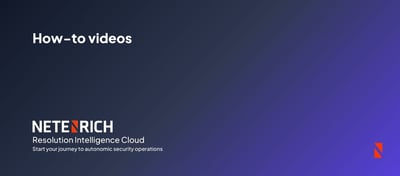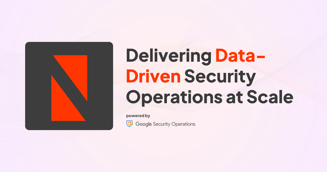Key Takeaways
- Google Chronicle delivers value only if you feed it the right logs. Prioritize firewall, endpoint, authentication, and cloud logs to detect threats faster and with greater context.
- Normalized and enriched logs power better detection and investigation. Use Chronicle’s Unified Data Model and tagging to connect activity across users, systems, and environments.
- Ingestion discipline matters. Filter out noise, focus on high-value signals, and automate where possible to reduce cost, improve performance, and strengthen your SOC.
Only 23% of organizations say they have full visibility into their cloud workloads. About two out of three don’t.
- Logs are everywhere. But they’re often stuck in silos.
- Threats are moving fast. Tools are still slow.
- When data is missing, detections break. And so does your defense.
With Google Chronicle, you can have all of your security data at one place.
- It can ingest 283% more telemetry when compared to legacy SIEMs.
- Log searching becomes faster, from seconds to hours.
- And it helps teams detect 87% more threats, faster.
But here's a catch: Chronicle is only as powerful as the data you feed it.
To get real visibility, you need the right logs. The ones that help you detect, investigate, and stop threats. In short, getting your log ingestion strategy right is crucial for Google Chronicle to deliver real security value.
Our previous article explored the different methods for data ingestion; now, let's focus on what to ingest, highlighting the essential log sources that provide the most value within Google Chronicle.
Overview of Google Chronicle's Log Ingestion
Google Chronicle is a cloud-native security platform. It helps you detect threats fast by analyzing massive volumes of security data.
Chronicle takes in log data from all kinds of sources and standardizes it using Google’s Unified Data Model (UDM). That way, it’s much easier to connect the dots, spot threats, and dig into security incidents across your environment.
It can pull in data from hybrid and multi-cloud environments, with built-in support for syslog, APIs, and popular tools like EDRs, SIEMs, and major cloud platforms. Everything gets stored for the long haul and it's always searchable, with no waiting around or rehydration needed.
The big benefit? You get a clear, unified view of your entire security environment so you can detect, investigate, and respond in real time.
Critical Log Types to Ingest
As organizations adopt hybrid cloud environments, understanding which log types provide the most security and operational value becomes essential.
Google Chronicle and your whole SecOps workflow only work as well as the logs you feed into it. Getting the right types of logs from the right sources is key. They power your detections, add critical context, and help your team respond faster and more confidently.
Let’s walk through the most critical log types to prioritize and why each one matters.
Firewall Logs
Firewall logs ingested into Google Chronicle capture network traffic entering and leaving your environment. They record key details like IPs, ports, protocols, and the status of each connection, whether allowed or blocked. You’ll also see rule matches, threat signatures, and anomalies flagged by next-gen firewalls.
In Chronicle, these logs help you:
- Detect early-stage attacks like scanning or probing
- Spot unauthorized access attempts
- Correlate suspicious traffic with endpoint or cloud events
- Monitor and strengthen your network perimeter
It doesn't matter if you're running Palo Alto, Fortinet, Cisco, or Check Point. Your firewall logs are the first place to look when you need visibility into what’s happening on your network. They give you essential context at the edge and a solid starting point for deeper investigations.
Endpoint Detection Logs
Google Chronicle endpoint detection logs reveal what’s happening on your devices, laptops, servers, and cloud workloads. These logs usually come from EDR tools such as CrowdStrike, SentinelOne, or Microsoft Defender.
They capture things like when a process starts, files are modified, network activity, and any behavior that might look suspicious. Many also map directly to MITRE ATT&CK techniques.
Ingesting them into Chronicle lets you:
- Detect malware and lateral movement
- Link user behavior to system activity
- Uncover persistence and privilege escalation
- Reconstruct attacks across multiple endpoints
Most threats hit endpoints at some point. Chronicle helps turn logs into a clear, easy-to-follow timeline, fast. With its built-in normalization and correlation, your team gets the visibility needed to spot and stop threats before they have a chance to spread.
Authentication Logs
Google Chronicle authentication logs show who’s logging in, when, and from where. These logs are key to catching identity-based threats, which have become one of the most common ways attackers get in, whether you're in the cloud or still running on-prem.
They usually come from systems like Active Directory, LDAP, VPNs, SSO tools like Okta or Azure AD, and MFA platforms. You'll see things like login attempts, failed logins, session activity, and account lockouts, all of which can offer early warning signs of trouble.
When fed into Chronicle, authentication logs help you:
- Spot brute-force and credential stuffing attacks
- Detect suspicious login patterns and risky behavior
- Investigate privilege escalation or insider misuse
- Correlate identity activity with endpoint and cloud events
With identity now at the center of most attacks, these logs are essential. Chronicle’s normalization adds context, making it easier to connect users to actions and uncover threats that would otherwise slip by.
Cloud Infrastructure Logs
Google Chronicle cloud infrastructure logs give you visibility into what’s happening across platforms like GCP, AWS, and Azure. They make it easier to capture critical activity like admin actions, API calls, network events, and resource changes.
We rely on key sources like GCP Audit Logs, AWS CloudTrail, AWS Config, and Azure Activity Logs.
These logs help us track what’s happening in the cloud, who took what action, when they did it, and where it came from. That covers things like logins, changes to permissions, deploying services, and accessing sensitive data.
Ingesting cloud logs into Chronicle helps you:
- Spot mistakes in settings and catch any unauthorized access
- Track risky IAM or firewall changes
- Investigate suspicious cloud API activity
- Correlate cloud events with endpoint and network data
Cloud environments change fast, and attackers move faster. Without cloud logs, visibility gaps grow. Chronicle helps close those gaps by turning raw cloud telemetry into actionable security insight.
Benefits of Comprehensive Log Ingestion
Bringing the right logs into Chronicle unlocks real security and operational value.
You get full visibility across your network, endpoints, users, and cloud. That means fewer blind spots and better threat coverage.
Detection becomes smarter. Chronicle makes use of high-quality, normalized data to catch real threats faster.
Response gets faster, too. With enriched context and sub-second search, your team can investigate in minutes, not hours.
You’re also audit-ready. Chronicle makes it easy to keep your logs for the long haul and stay compliant with standards like PCI, HIPAA, and ISO 27001.
And your SOC runs more efficiently. Analysts spend less time chasing noise and more time focused on what matters.
Quick Checklist: Best Practices for Log Management
- To get the most out of Google Chronicle, it’s important to be intentional with what and how you ingest.
- Start with high-value logs. Focus on the ones that give strong context for threats, like who did what, where, and when.
- Normalize early. Use Chronicle’s built-in parsers or set up custom ones. For better results, it is best to adopt the Unified Data Model.
- Don’t ingest everything. More data isn’t always better. Filter out the noise to save on cost and improve performance.
- Add useful context. Tag your logs with things like user info, asset details, and location. It makes searches faster and detections more accurate.
- Automate where you can. Use Chronicle APIs and tools like BindPlane to streamline ingestion. Automation keeps things fast, clean, and scalable.
Streamline Chronicle Ingestion with Netenrich
Google Chronicle is one of those powerful tools that come with built-in security insights, incredible speed, and impressive scale. But like any platform, its real value depends on the data you feed into it. By focusing on the most important log sources and following smart ingestion practices, security teams can get the most out of what Chronicle has to offer.
To understand how to ingest the right logs into Chronicle, join Netenrich's Google SecOps 101 virtual bootcamp. It covers real-world strategies for ingesting hybrid cloud data, filtering noise, and building scalable, high-impact detection pipelines.
Frequently Asked Questions
1. What log types should I prioritize for ingestion into Google Chronicle?
Prioritize logs that offer the best threat visibility. Firewall logs track network traffic, endpoint logs monitor device activity, and authentication logs capture login behavior. Cloud and DNS logs also help detect suspicious activity. These log types are the most valuable for identifying and responding to security incidents effectively, without overwhelming your system with unnecessary data.
2. How do firewall, endpoint, and authentication logs improve threat detection in Chronicle?
The integration of Firewall, endpoint, and authentication logs in Chronicle reveals signs of threats such as malware, unusual activities, or unauthorized logins. They provide comprehensive visibility across networks. This helps Chronicle in identifying anomalies, tracing attack paths, and detecting advanced threats with better accuracy and speed.
3. How does Chronicle’s Unified Data Model (UDM) help in analyzing security logs?
Chronicle’s Unified Data Model (UDM) normalizes and structures log data from different sources such as firewalls, endpoints, and cloud services. These raw logs are then transformed into a standardized format with event categories, field names, and entity relationships. This makes it easier for analysts to write detection rules and apply them across all normalized data sources, universally.
4. Can I reduce log ingestion noise without missing critical security signals?
Yes. The trick is to use filters and rules and focus on high-value sources. With Chronicle, it becomes easier to normalize data and highlight high-risk activity. You will only be collecting the data that you need to detect threats, keeping your system focused and efficient.
5. How can Netenrich help optimize my Google Chronicle log ingestion strategy?
Netenrich can help you get the most out of Google Chronicle by making your log ingestion smarter and more efficient. By setting up filters, exclusions, and parsing rules, it can help you cut-out on repetitive or low-value logs. Netenrich also ensures the correct formatting of logs and their right mapping into Chronicle’s Unified Data Model (UDM). This makes detection and correlation work smoother.
Learn more about the best practices for Log Ingestion in Hybrid Environments





